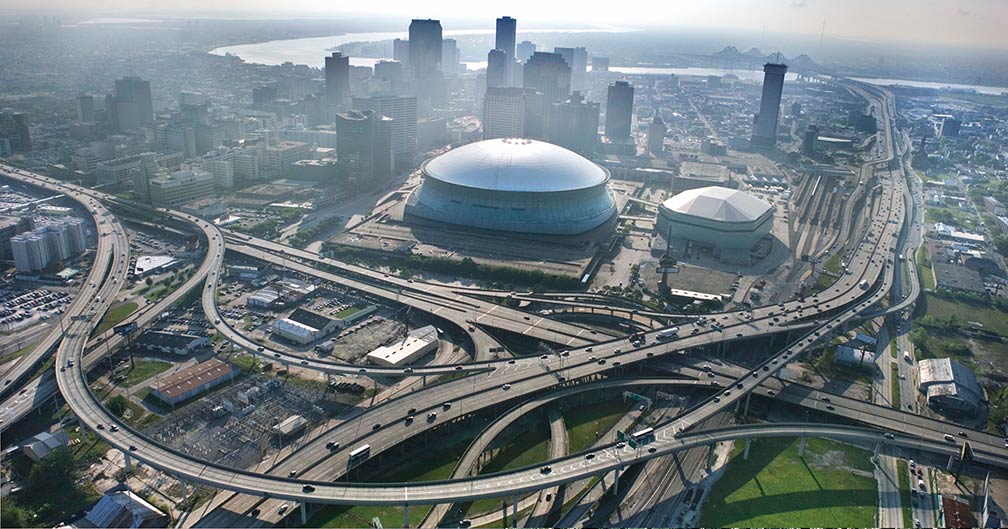Cities and Towns in Louisiana
 New Orleans' Central Business District with the Mercedes-Benz Superdome in the foreground, New Orleans is Louisiana's flagship city.
New Orleans' Central Business District with the Mercedes-Benz Superdome in the foreground, New Orleans is Louisiana's flagship city.
Image: Nowhereman86
The map shows the location of the following cities and towns in Louisiana:
The largest city is
New Orleans (391,500).
The second-largest city is
Baton Rouge, the capital city, 227,500.
Shreveport (195,000), Metairie (part of the New Orleans metropolitan area; 138,500), Lafayette (127,600)
Population figures in 2017
Other cities and towns in Louisiana:
Abbeville, Alexandria, Bastrop, Bogalusa, Bossier City, Bunkie, Chalmette, Crowley, De Ridder, Eunice, Ferriday, Franklin, Hammond, Houma, Jennings, Kenner (part of New Orleans metro), Kinder, Lake Charles, Leesville, Mansfield, Minden, Monroe, Morgan City, Natchitoches, New Iberia, Oakdale, Opelousas, Ruston, Slidell, Springhill, St. Francisville, Sulphur, Tallulah, Thibodaux, Tullos, Ville Platte, Winnfield, and Winnsboro.
 ExxonMobil oil refinery in Baton Rouge, Louisiana, seen from the Capitol tower. The refinery alongside the riverbank of the Mississippi is the fourth-largest oil refinery in the United States.
Image: Adbar
ExxonMobil oil refinery in Baton Rouge, Louisiana, seen from the Capitol tower. The refinery alongside the riverbank of the Mississippi is the fourth-largest oil refinery in the United States.
Image: Adbar







 ExxonMobil oil refinery in Baton Rouge, Louisiana, seen from the Capitol tower. The refinery alongside the riverbank of the Mississippi is the fourth-largest oil refinery in the United States.
ExxonMobil oil refinery in Baton Rouge, Louisiana, seen from the Capitol tower. The refinery alongside the riverbank of the Mississippi is the fourth-largest oil refinery in the United States.